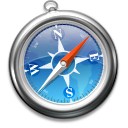 Wow. I have to admit I was not expecting this at all, but Apple has just announced they’re releasing the Safari web browser for Windows.
Wow. I have to admit I was not expecting this at all, but Apple has just announced they’re releasing the Safari web browser for Windows.
Increased consumer choice, of course, is a good thing. The most immediate benefit, though, is that Windows-based web developers (the majority) who haven’t been willing to buy a Mac to test their sites in Safari will be able to do full testing on all four major rendering engines: Trident (IE), Gecko (Mozilla/Firefox/etc.), Webkit (Safari) and Presto (Opera).
Also, there’s some really cool stuff available in recent versions of WebKit that will be great to have available for a wider audience.
Interesting thought: this may be the first browser released since Opera expanded to Linux in ~2000 that is available in the same version on Windows and Mac, but not Linux. Even when Internet Explorer was available for the Mac, it used a different engine than the Windows version did.
I wonder what impact this will have on the development of Swift. Its main claim to fame was porting WebKit to Windows, and it’s been months since their last release.
I also wonder what the status is on re-merging the KHTML and WebKit forks. It’s gotten to the point that Konquerer is only an approximation of Safari, making testing on Linux a little harder than it used to be.
(via Asa Dotzler)
No doubt there’s a 500-comment Slashdot discussion already.
Update: Slashdot’s all over it, and Opera Watch has a thread going as well.
Update 2: I’ve posted my thoughts on the implications for Opera. There’s an update at CSS3.info, where they have previews of upcoming CSS features available in Safari 3.
Update 3: I’ve updated the Alternative Browser Alliance to reflect Safari’s new status. This also solves a nagging doubt I’ve had as to whether the default browser on Mac OS should really be considered “alternative.” On Windows, it definitely is.
Update 4: The Webkit team and Web Standards Project have weighed in. The Windows version of WebKit should be available later today, which will be nice for following progress on issues as it moves from beta toward final version. It turns out there’s a regression and at least the Windows version no longer renders the Acid2 test correctly.
Update 5: The author of Swift says that Swift isn’t going away [edit: the blog has since vanished], and points out that “Swift renders more like a Windows Application, both in the GUI and in WebKit. Safari, looks just like OS X, similar to iTunes 6 and below.” Ever since Apple started porting apps to Windows, I’ve found something odd: A common complaint about third-party Mac software is that it doesn’t look and feel native (one of the big reasons we have Camino as well as Firefox), yet when Apple ports their own apps to Windows, it makes them look exactly the same as they do on Mac OS instead of making them work like native apps. I mentioned this to Katie yesterday and she suggested it might be a case of turnabout being fair play.